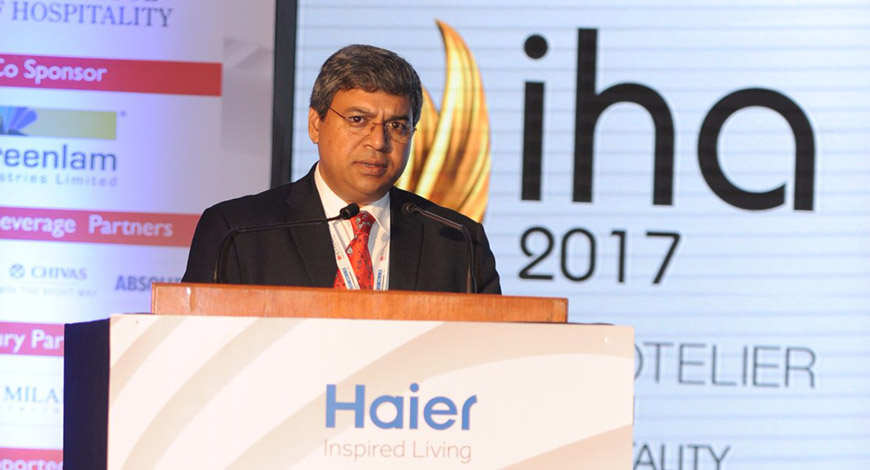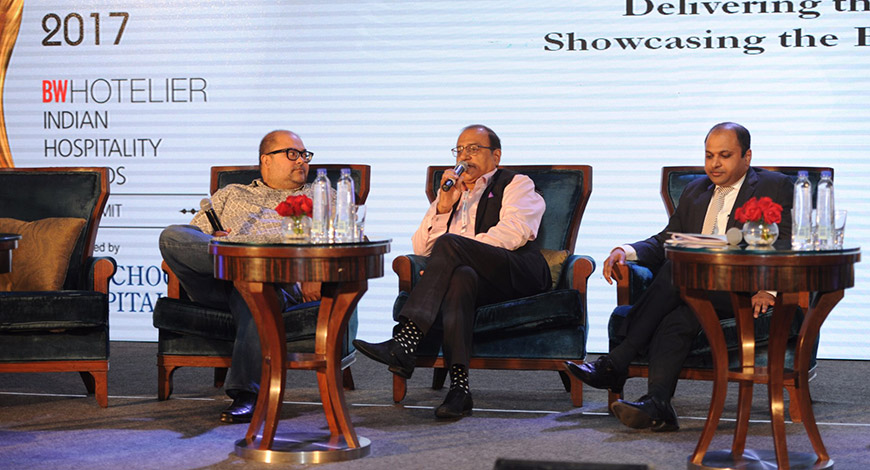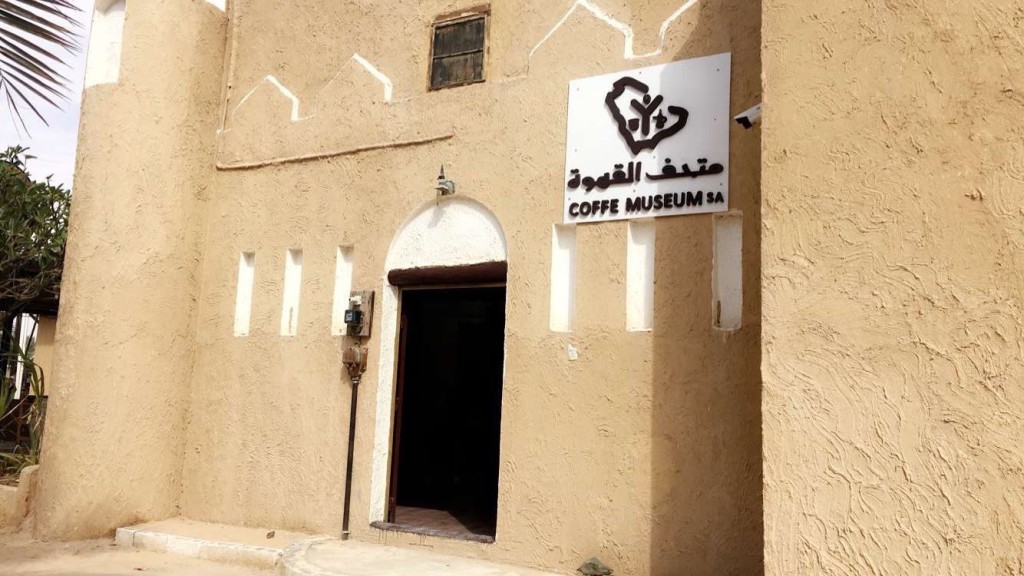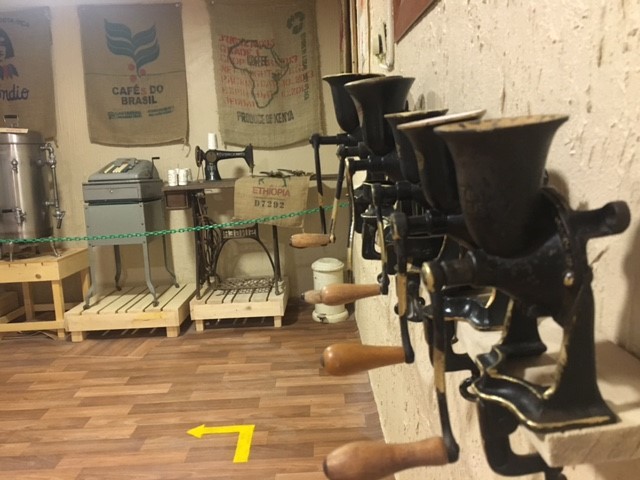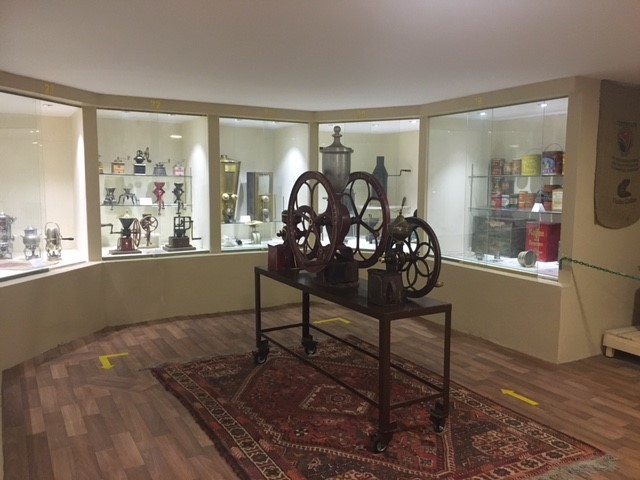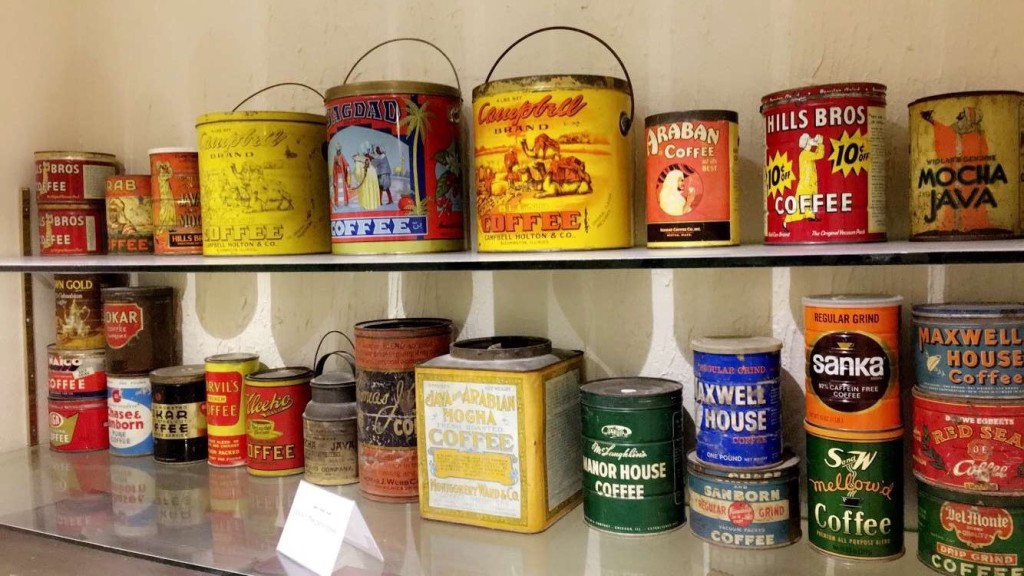Monthly Archives: March 2017
24
Emergence Of Indian Coffee Industry
As the divisions of Coffee Day – the B2C service Cafe Coffee Day, in B2B the Coffee Day Beverages, Coffee Day Exports and Coffee Beans is sold to customers
The caffeine buzz has caught up in all cities in India closing the generation gap which once drank tea and coffee. At the BW Hotelier Indian Hospitality Awards & Summit 2017 at The Leela Ambience Hotel, Gurugram, a session on “Showcasing the Best of Indian Coffee” moderated by Bikramjit Ray, Executive Editor of BW Hotelier, the panelists spoke about the growing importance of coffee in the contemporary times.
The session was opened by Abhrajyoti Chatterjee, from Coffee Day who mentioned how their brand intends to serve coffee with passion. Coffee Day is a brand which exports coffee to Europe, Middle East, EU and many other places. They even have 1500+ acres of area for the production of coffee.
As the divisions of Coffee Day – the B2C service Cafe Coffee Day, in B2B the Coffee Day Beverages, Coffee Day Exports and Coffee Beans is sold to customers. Their brand has 41000 coffee machines in India with presence in over 1000 cities. Every year Coffee Day expands in nearly 100 cities. The machines like BMF, Indus, Sienna, Orion are the several machines which produce coffee. It also has divisions such as Coffee Day Lounges and Express Outlets in India.
The national coffee brand has a presence in 28 states, 127 cities and 665 technicians. Their huge setup which is only a backup and then we have our various outlets across India. The variations of coffee are like morning java, classic roast, filta fresh, arabica and robusta blend.
During the session it was discussed how the idea of coffee and tea could be interchanged in the earlier days. However, India is the fifth largest producer of coffee in the present times.
The session covered by Vishrut Gupta, Director Food & Beverages, Pullman New Delhi Aerocity Delhi and Sanjiv Mediratta, Group Advisor, F&B Soution and New Business Strategy, Coffee Day discussed how they are bringing a new experience for millennial in coffee. The idea of an expresso was mixing coffee with chocolate powder. More people are educated about coffee at present.
The QSR has had an impact on the purchase of coffee on people. The taste for coffee being lighter or stronger is understood by people. People liking to click more pictures with coffee is also gaining more customers for this beverage. The automatic machines also gives people the right experience of coffee.
Innovation was always present in food; but was lesser for beverages. Whether expresso, americano or latte, the youth being more exposed to the world is aware of the global trends of coffee.
source: http://www.businessworld.com . BW – Business World / Home / by Anisha Aditya / March 24th, 2017
22
21
20
19
VIDEO: Coffee museum in Saudi Arabia presents history of the beverage
At a museum in Al-Ahsa, in eastern Saudi Arabia, researcher Abdullah Al-Hijris told Al Arabiya about the history of the bean that originated in the fifth-century, explaining the secret methods of roasting and grinding one of the world’s most favorite drinks.
Al-Hijris said that the coffee museum, which was adopted by the National Authority for Tourism and National Heritage (CNTA) and is in line with the Kingdom’s 2030 vision, includes a collection of historical coffee items and tools up to more than 100 years old.
The researcher explained that the museum includes a laboratory to conduct scientific research on all types of coffee.
The museum also has an external building used to host visitors and offer them Arabic coffee.
source: http://www.english.alarabiya.net / Al Arabiya / Home> Lifestyle> Art & Culture / by Staff Writer, Al Arabiya Net / Sunday – March 26th, 2017
Video: source: http://www.youtube.com
17
A lot can happen over hockey
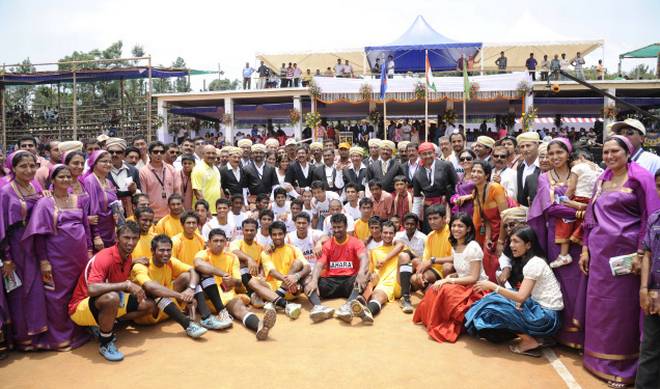
Once a year, Kodava families from around the world come together to participate in a unique hockey tournament in a sleepy town. Shreedutta Chidananda on the 16th edition of the festival, hosted by the Iychettira family this year, and its place in Coorg’s culture.
An hour northeast out of Gonikoppal, along one of the narrow, undulating roads typical of the region, Ammathi almost springs out of the country; an oversized clearing after endless acres of coffee plantation. Down here, in Coorg’s south, it is a searing 34° during the day; nothing like the popular postcard images of mountains and mist. Yet, ask locals and they will say their part of Coorg is just as beautiful as Madikeri or Kushalnagar, lacking only the tourists and the hype about the north.
Ammathi, the venue of this year’s Kodava hockey festival, is an unremarkable town. A dozen small stores share premium space around the bus stop with the Cauvery Recreation Club and the Titanic Hotel and Bar.
Preparations galore
On the eve of the Iychettira Hockey Cup, the 16th edition of Coorg’s annual hockey competition among its Kodava families (there are close to 800), there is no hint of the extraordinary influx that is to follow. Overseeing preparations at the Ammathi Government High School ground, Chairman of the Tournament Committee, Iychettira K. Anil is a fiendishly busy man. “I’ve had to charge my phone thrice today,” he says. “It just won’t stop ringing.”
Temporary bleachers are coming up on all sides while a few workers tend to the pitch.
“Organising a tournament of so many teams is a logistical headache,” Anil says as he stands inside the under-construction pavilion and surveys the ground. “Sending the draws out to all 217 teams is hard enough. Then you have to conduct 12 matches a day across two venues.”
Sixty-two families signed up for the inaugural edition in 1997. The numbers have since swollen, reaching a high of 281 in 2003, prompting claims of being the world’s largest hockey tournament. Lasting three weeks, it is a single-elimination tournament and concludes on May 13. “A Coorg has to hold a hockey stick,” says Anil. “Show me another tournament in India where so many teams turn up.”
In the weeks leading up to the competition, practice was held at the Middle and High School grounds but with work on the playing surface now on in full swing, the venues are off limits. Action has shifted, instead, to the Good Shepherd Convent on the town’s south-eastern fringes, just off the highway. It is an uproarious affair with boys, youth and men battering a tired ball about. A viewing gallery rises up sharply on one side of the field — above which the groundskeeper occasionally materialises as dusk falls to see if the gates can finally be locked — while the road falls away on the other.
The Uddapanda family’s U.S. Jagath, a genial, moustachioed middle-aged man, says that his team has been training for close to 20 days. “We take it seriously. Maybe not very seriously but we definitely don’t want to lose in the first round.” A centre-half on the Mysore University team in his youth, Jagath says most sides have three or four players of similar, if not better, pedigree. “The stronger ones even have former India internationals. The semi-finals and final can get quite feisty. If someone can’t play hockey here, he’s deemed a useless fellow. Our standards are pretty high.”
Ordinarily only the festival’s later stages draw significant crowds — the semi-finals and the final have been known to attract sometimes 30,000 spectators — but this time, there is a gushing anticipation about the inaugural day.
Those that have missed the billboards and the flyers will, perhaps, have noticed the rear ends of the district’s KSRTC buses. The Indian team will be in town, they proclaim, to play a “Coorg XI” in an exhibition game.
Gathering crowds
Anil predicts a traffic nightmare and he is not too far off the mark. On Saturday morning, the line of parked cars stretches over a kilometre from the ground; this after two prescribed lots run out of space. The local police are out in force, attempting to direct recalcitrant drivers elsewhere.
Local newspapers, meanwhile, dedicate large chunks of space to the Hockey Nammé. Andolana, a Kannada daily, offers up three pages. “Broken hearts, warring brothers, families rent by strife; they have all been united by the Nammé,” a piece by-lined “Hockey Lover” exults on the front page.
The ground is chockfull when the India team arrives. Men and women from the host Iychettira family line the grandstand in traditional Kodava attire; the purple of the saris an arresting sight. On the other sides, families clamber up the tiers in search of a vantage point. Boys and girls — in hats, shades, soft drink in one hand, cell-phone in the other — mill about casually. Kids flood the walkways below making their way around on the narrow planks with little difficulty. Every seat is taken, every inch of space occupied.
Head Coach Michael Nobbs is visibly stunned by the several thousands strong attendance. “I had some idea of what to expect but this is miles ahead of anything I’ve seen,” he confesses, capturing the crowds on his iPhone. “There’s just so many kids here. It blows me away.” Every goal is met with frenzied applause; the home side loses 3-1 but there’s no hint of disappointment.
Although the India XI is without most of its high-profile players, Nobbs has been careful to bring with him the ones hailing from Coorg. S.V. Sunil and V.R. Raghunath — though not Kodavas — draw the loudest cheers. “I cannot tell you enough how good a concept this is,” the latter says. “I wish I were a Coorg; I could have played too.”
The tournament proper begins after lunch that afternoon; the Codanda and Cheranda families feature in the first game. Although the crowds have largely melted away, both teams find vocal support in their women. “Trap the ball”… “Pass it to the left”…”He’s open”, they cry lustily applauding every interception, forward run, or shot.
All together
The match is an opportunity for the Codandas’ C.M. Somanna to share the pitch with his nine-year-old daughter who comes on with a few minutes to spare. The shorts may reach down to her shins and the stick resembles a spear in her hands, but Nila is visibly thrilled. The final whistle eventually blows and the Codandas manage to sneak a nervy one-nil win.
“We have only 100 members yet, earlier, we hardly met once a year,” says Swati Bopanna, a Codanda elder and President of the Women’s Hockey Association of Coorg. “People didn’t know each other’s names. Now we all are here.”
Somanna concurs. “This tournament is a blessing,” he says. “Someone is in Venezuela, someone in north India, someone is studying in Bengaluru or Mysore, someone running his plantation in a different part of the district. It has brought us all together. The concept has worked wonders within the families.”
After the victory, the Codanda family congregates in the car park. Sandwiches are handed out as players — father and daughter, uncle and nephew, far-flung cousins — joke and swap stories. Fifteen minutes spent observing their potential opponents in the second round and they’re all off, vowing to meet for practice during the coming week. The team has never progressed beyond the third round but results, Somanna insists, are secondary.
Although the euphoria of the neutral has largely dissipated since the opening day, the families themselves are champing at the bit. They arrive in buses, hired vans, bikes or plush cars, each with their own team jerseys.
The Mukkatiras of Devanageri (for there are other Mukkatira families, albeit unrelated) have designed a rather smart yellow and white kit, “DM” monogrammed on the front. Manager Nanda Pemmaya watches from one side as his team warms up. “We’ve been training together for three days; we’ll see how far we can go,” he says. “But, win or lose, we’re all meeting at the end of the game. We have lunch and then we split.”
From a freak goal down, the Mukkatiras recover strongly, hammering four past the Paruvangada goalkeeper. Their young outside-right scores two fine goals, while their 72-year-old forward nets one. Post the hugs and the congratulations, the Mukkatiras get into their cars and head for their wondrously well-maintained iyn mané (ancestral home), an undisturbed quarter hour’s drive away, a right turn off the road to Virajpet.
Hearty laughter rings out from the pyol as the assembly celebrates the triumph with a few beers. A tough second round fixture awaits his men in eight days’ time, but Pemmaya is not unduly concerned. “The hockey festival is all about bonding, you know,” he says as platefuls of pork are passed around. “It is literally a festival.”
How it began
The Kodava hockey festival was conceptualised by Pandanda Kuttappa, a former State league referee, in 1997 and is today run by the Kodava Hockey Academy. Concerned by what he saw as falling standards in hockey in the district, Kuttappa hit upon the idea of a tournament among the families that would encourage more youngsters to take up the sport.
Though the first edition had only 62 participants, with hockey’s popularity in Coorg and its past there, it was never going to be difficult to draw more families. The numbers grew, with a high of 281 teams in 2003. The 2012 edition has received 217 entries.
The Kootanda family remains the most successful team, having won four titles (one shared with Kullettira), while the Kullettira, Nellamakkada and Palanganda families have all triumphed thrice. The Kaliyanda, Mandepanda and Anjaparavanda families have won the competition once
.The Palanganda family, led by star forward Amar Aiyamma, has won the event in 2010 and 2011. The same names are expected to be frontrunners for the title again.
There is no permanent venue, something organisers are striving to achieve, and the festival has been held across the district in previous years. Ammathi, the site of the 2012 festival, is playing host for the third time
Beyond numbers or tangible benefits, though, the Kodava hockey festival has accomplished what perhaps nothing else could have: uniting distant families.
The hosts
The Kodava Hockey Nammé (festival) is hosted by a different family each year and named after it. A family may not host the event more than once. Families apply to the Kodava Hockey Academy expressing interest and are allotted the tournament after evaluation.
The Iychettira family, host of the current edition, was offered the chance eight years ago, says I.K. Anil. “But we weren’t ready then. This time, I told the family that we should conduct it. We requested to be allowed to be hosts. It is a matter of great pride and honour. There are over 750 Kodava families and we are the 16th family to be chosen.”
Anil estimates expenditure to cross a crore; the Government of Karnataka has promised Rs.30 lakh, with the Iychettira family and the event’s sponsors funding the rest.
source: http://www.thehindu.com / The Hindu / Home> Society / April 28th, 2012
